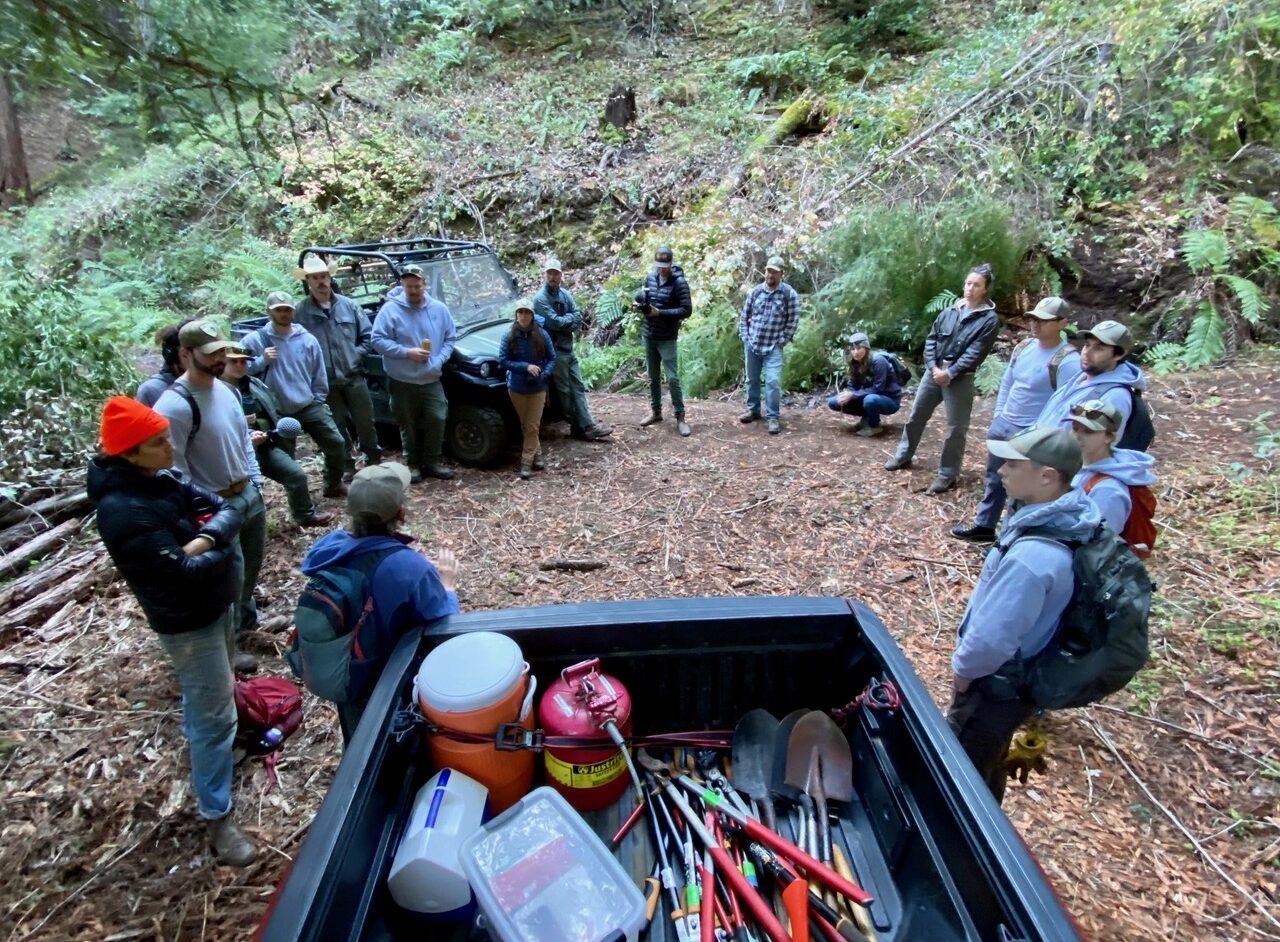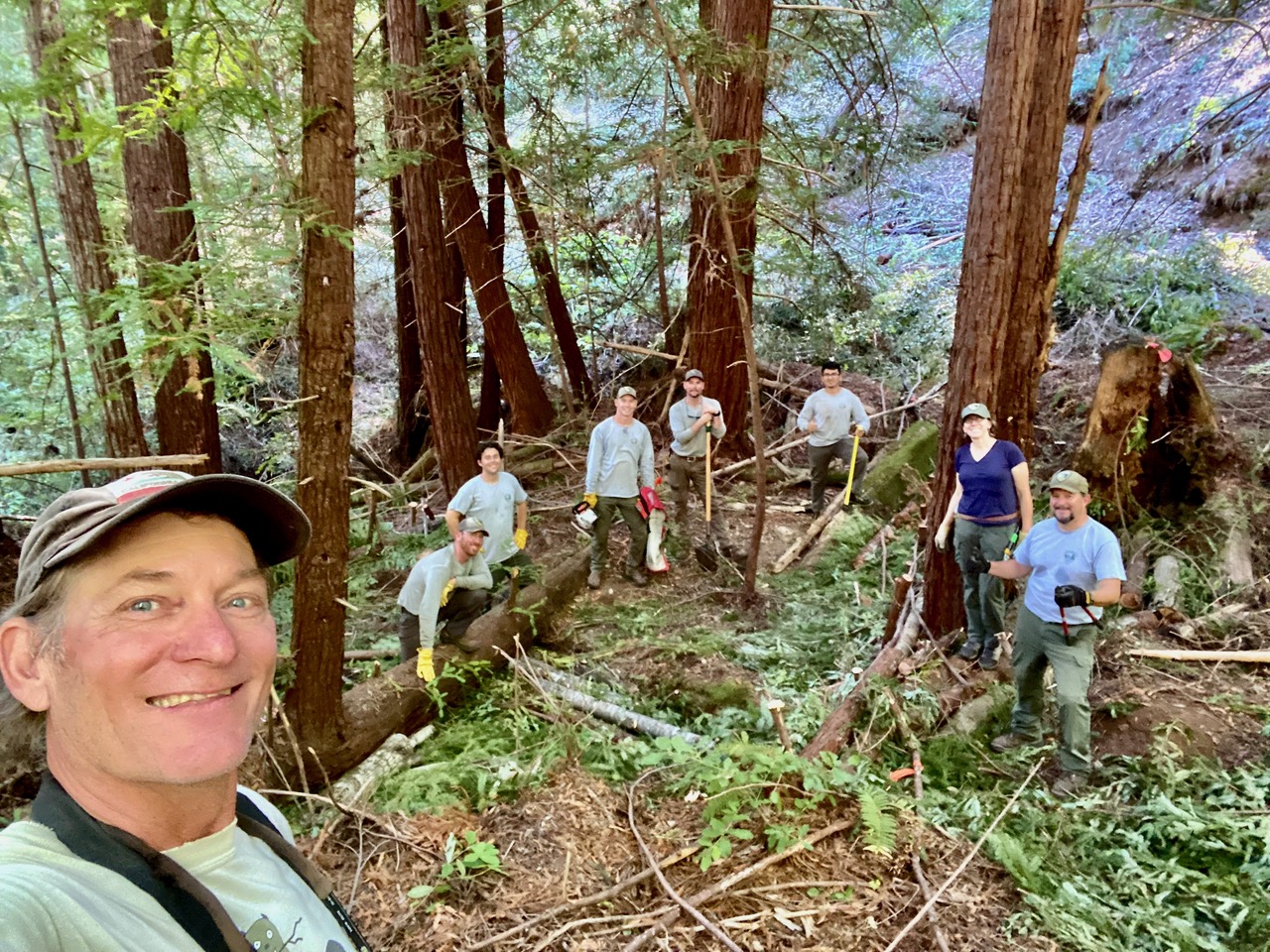
When the Sonoma County Regional Parks received funding to do some initial roadside clearance to remove excess fuel loads, Brock Dolman co-created a pilot program along with parks staff Minona Heaviland & Brook Edwards. The project consisted of working at two locations to use some of the slash, not as trash, but as beneficial biomass to help control erosion, hold more water on the land, sequester carbon, and create some wildlife habitat. We’ve been practicing this technique of forest thinning and gully stuffing on our own land and seeing great benefits—a way to simultaneously address both our fire fears and our water woes. It’s worth noting that this is the first time we worked with a public agency. This pilot program will continue over the next few years, allowing us to do restoration projects at a larger scale.
Before the project could start, we helped the SCRP with the permitting process, something we had developed with the North Coast Regional Water Quality Board and the CA Department of Fish and Wildlife in our own demonstration site. We were able to quickly adjust and modify the applications so that we could move forward with an expedited permit process. We continue to work with these agencies to develop expedited permit processes for these beneficial practices to be able to increase the pace and scale of analogous projects in the region and work towards achieving these low-risk high-reward applications.


The project involved placing woody material in sections of stream channels that were incised or experiencing headcut erosion. Woody material, including redwood, Douglas fir, tanoak, and seedless non-native broom, was sourced from onsite fuel reduction or invasive species removal projects along an adjacent shaded fuel break access route. These materials were placed in the channel, parallel to the flow direction, with the tips facing upstream in an interlocking fashion. The woody material was layered and woven together into a dense matrix to ensure thorough contact with the bed or banks of the receiving channel and to increase the filtration surface area. The result was a densely packed but porous matrix that disperses the energy of water during high flows while trapping soil and leaf litter particles, preventing further erosion and incision of the channel and mitigating headcut migration.
All work was done by hand without utilizing heavy equipment. The project treated approximately 100 linear feet of unnamed tributaries to Dutch Bill Creek, one of the state’s most important watersheds in the Russian River Basin for the recovery of coho salmon and steelhead trout. We look forward to continuing to partner with Regional Parks on this pilot program to expand the scale and reach of upper watershed restoration.





